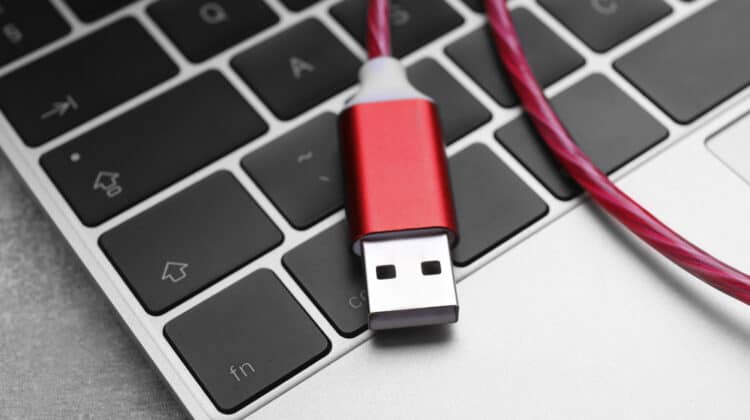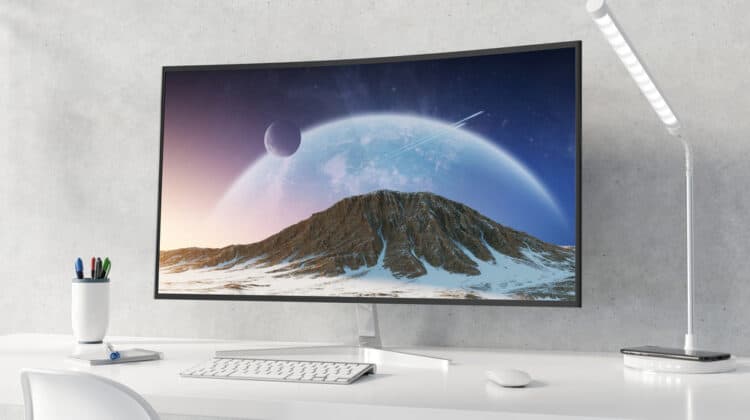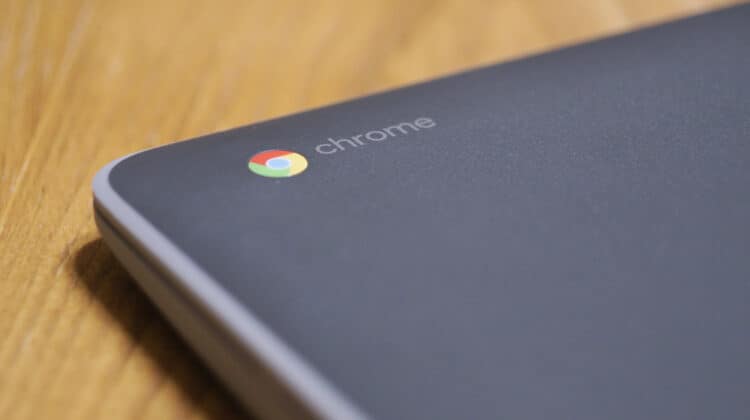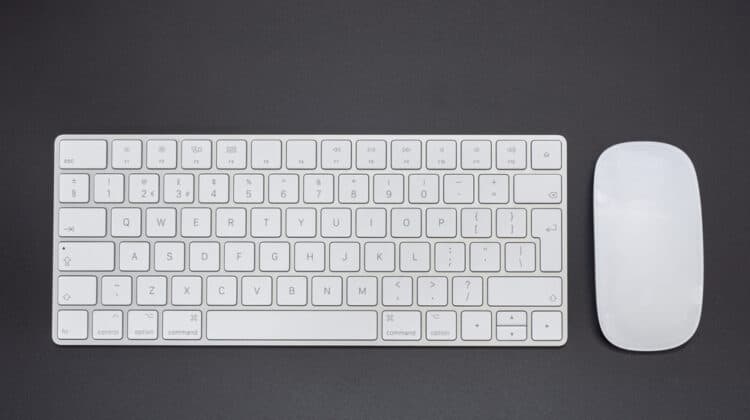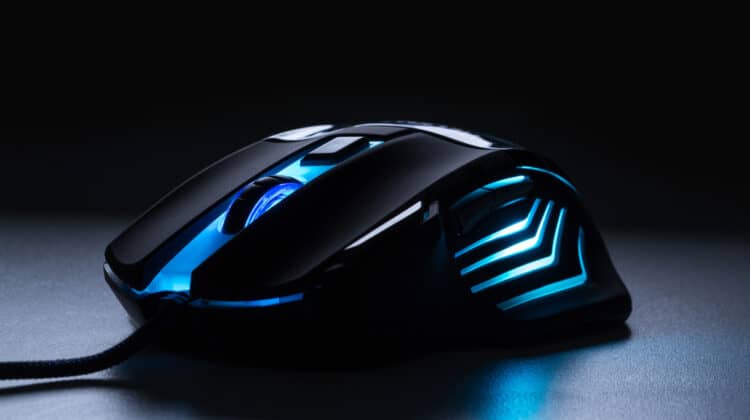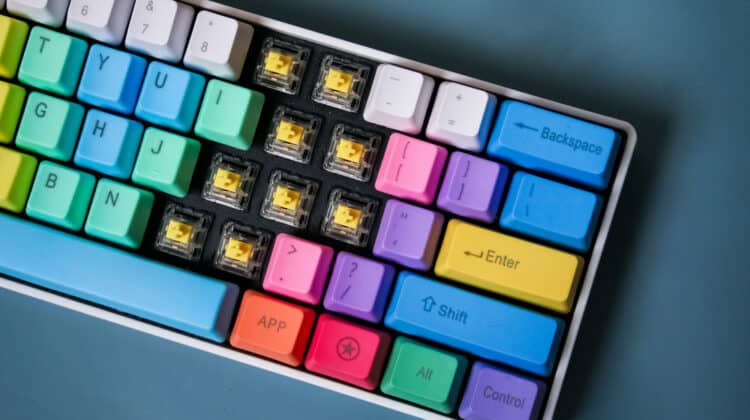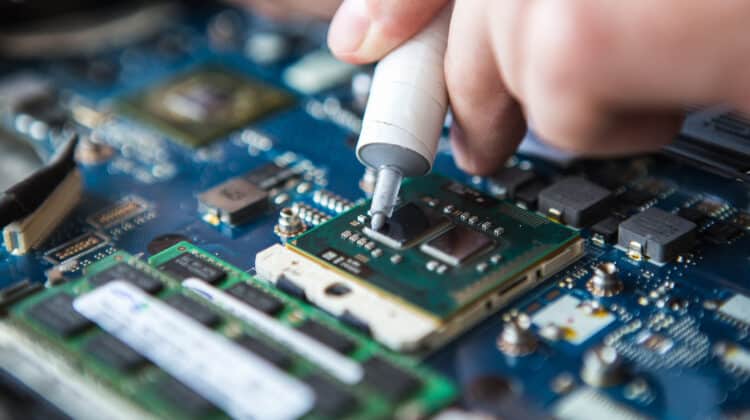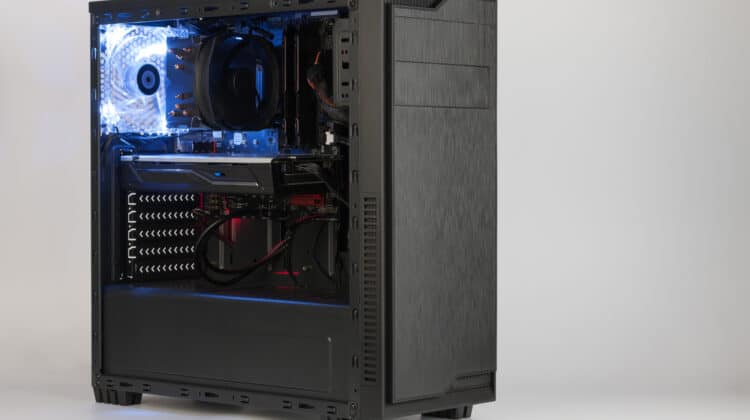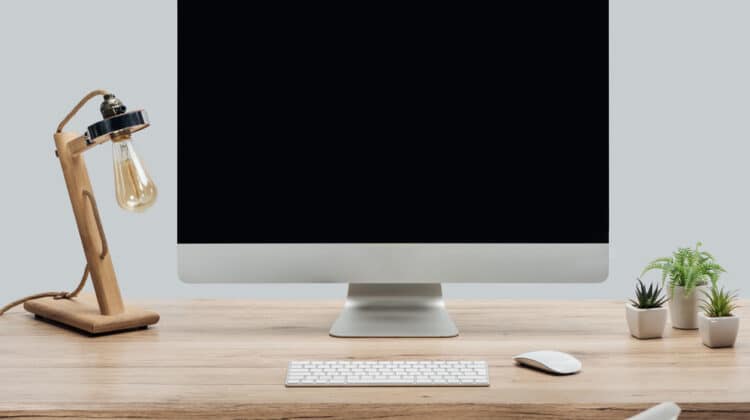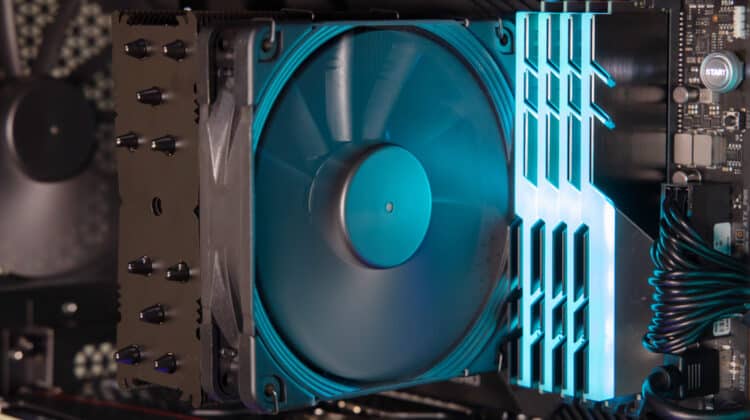
The dreaded blue screen of death!
Also known as BSOD, this used to be a terrifying blue screen filled with white text that you couldn’t make sense of.
Windows 10 has made the page less scary, but your heart still skips a beat whenever you encounter that frown emoji.
Things get scarier when the problem doesn’t go away after restarting your computer.
What could be wrong?
How do you fix it?
Windows 10 Stuck On Blue Screen (Causes, Fixes)

If you keep getting a blue screen on Windows 10 even after restarting your computer, your operating system has run into a critical issue that it can’t automatically resolve.
Corrupt settings in the boot sequence or Windows loader are a common cause.
Driver conflicts, buggy programs, and hardware malfunctions are other frequent causes.
Unfortunately, there’s no single reason for this recurrent blue screen issue.
Therefore, you’ll have to systematically rule out different causes until you pinpoint and solve the problem.
1. Boot Into Safe Mode

Windows Safe Mode is an advanced diagnostic tool that disables many non-critical components of your Windows.
It lets you boot your computer with only the most critical drivers and features.
If your computer boots in Safe Mode, you probably don’t have hardware issues.
Of course, you can’t be one hundred percent sure, but the odds are low.
How To Boot Safe Mode In Windows 10

Starting with Windows 8, Microsoft decided to turn Safe Mode into an unnecessarily complex endeavor.
It hasn’t gotten any easier in Windows 10.
We’re assuming that you can’t log on to your Windows normally.
You will have to get into Safe Mode from a blank screen before your computer tries to load Windows and throws up a BSOD.
Follow these steps:
- Press and hold the power button for 10 seconds to completely shut down your computer.
- Turn on the computer.
- As soon as you see the POST screen (or the manufacturer’s logo if you’re on a laptop), press the power button again and hold it for 10 seconds.
- Turn on the computer again.
- Turn on the computer and let it go to Windows.
- Hold the power button for the third time and then turn the machine back on.
Note: You may be able to circumvent the tedious process by pressing F11 multiple times before the Windows load process begins, but that shortcut doesn’t work on all devices.
Now, you’ll be greeted with a blue page known as winRE.
Navigate to Troubleshoot > Advanced options > Startup Settings > Restart.
Once your computer restarts, select 5 to boot into Safe Mode with Networking.
This option lets you have internet access while in Safe Mode, which is pretty handy if you need to download a driver or diagnostics tool.
BitLocker Recovery Keys

Windows 10 has a BitLocker feature that encrypts your files to protect your information against hacking.
In many cases, it asks you to enter your recovery key before it gives you access to Safe Mode.
The most convenient solution is to log on to your Windows and suspend BitLocker protection via the Control Panel.
Unfortunately, when your Windows is stuck on a blue screen, you can’t get to the Control Panel or any other part of Windows.
However, not all hope is lost.
You can obtain your recovery keys from the Microsoft account associated with your Windows.
Here’s what you to do:
- Open account.microsoft.com on your smartphone or another computer.
- Log in using the email associated with your Windows account. If you haven’t set a password, you can ask for a one-time code to be sent to your email.
- Once logged in, find the device you want to troubleshoot and click View details.
- Under BitLocker data protection, click on Manage recovery keys.
Now, you’ll probably see a few keys on this list.
You should pick the one whose Key ID matches the string displayed on your monitor when Windows prompts you to enter your recovery key.
Start Troubleshooting

Congratulations!
You’ve made it past all the hurdles Windows could throw your way.
When you boot into Safe Mode, your options and privileges are limited, depending on your version of Windows and the permissions of the user account you use to log in.
Therefore, you may not be able to perform all the following steps.
However, start with the first two and work your way down the list, performing the tasks that apply to your specific situation and that Windows lets you do.
A. Run BlueScreenView
A blue screen occurs when Windows runs into an error it can’t recover from or ignore.
For instance, two drivers may want to access the same system file simultaneously, which creates a deadlock.
Whenever your computer runs into a blue screen, Windows logs the error details and then halts all operations to break deadlocks and, in some cases, protect itself from damage.
Windows 10 doesn’t come with a default utility to let you read those logs (aka dump files).
Microsoft has developed Windows Debugger and Dump Check, which are downloadable utilities that let you read dump files, among other files.
However, these are advanced tools suited to power users with some programming knowledge.
Instead, we recommend BlueScreenView, a lightweight tool that lets you read the same information in a more user-friendly way.
We recommend downloading the app to another computer and transferring it using a USB thumb drive.
However, if you have internet access in Safe Mode, you can also download it directly.
Since you’re in Safe Mode, you may not be able to install an application.
If you get an error message when installing BlueScreenView, run the portable version instead.
It’s the first option on the download page and downloads as a zip file.
Don’t forget to unzip it before moving it to the thumb drive.
Once you open the app, check the last dump file.
Take note of the stop code and description.
Google that information to see what caused the issue and how you can resolve it.
B. Check Event Viewer
Event Viewer is a Windows 10 tool that provides information about the errors on your computer.
You can use it to troubleshoot problems with programs, drivers, services, and hardware devices.
Check the Event Viewer for error messages if you can’t find the right dump file using BlueScreenView.
If the blue screen is caused by an application rather than a driver or hardware, you can find the details in the Event Viewer.
You can access the utility through Control Panel > Administrative Tools or by typing “eventvwr” in the search box on the taskbar.
Once there, expand Windows Logs > Application.
Then look for Errors and Google the text under the General tab.
C. Disable Auto Restart
Auto Restart is the setting that forces your computer to automatically restart when it encounters a blue screen.
Although it’s a convenient feature, it also makes debugging harder since you won’t have time to take note of the stop code and error details.
Windows 10 sometimes displays helpful information and a QR code to scan when it has to throw a blue screen.
If your computer restarts after a few seconds, you won’t get a chance to see that information or scan the code to visit the appropriate help documentation.
Follow these steps to disable auto restart in Windows 10:
- Press the Windows Key + D to minimize all programs and get to your desktop.
- Right-click on This PC and select Properties.
- Click on Advanced system settings from the left-hand sidebar.
- Under Startup and Recovery, click on Settings.
- Uncheck Automatically restart.
Now, restart your computer and let it boot normally.
If you run into a blue screen, you now have time to write down the error code and troubleshoot your problem more effectively.
D. Rollback Updates
Did your blue screen start to appear after installing a recent update?
If so, you can try to uninstall the update and hopefully get rid of the problem.
Windows 10 updates come in two categories: major builds and regular updates.
You only have ten days to roll back major updates because Windows deletes the installation files to save space on your computer after that period.
On the other hand, regular updates can always be uninstalled.
They’re less likely to cause your persistent blue screen problem.
Follow these steps to uninstall an update:
- Press the Windows Key + I to open the Windows Settings dashboard.
- Select Updates & Security.
- Click on View update history.
- You’ll only see major updates from the past ten days.
- Click Uninstall updates from the left-hand sidebar. This feature lets you remove individual feature updates. Locate and uninstall the most recent ones.
- Restart your computer to see if the issue persists.
E. Other Ideas
If you haven’t been able to resolve the issue so far, you probably have to dig deeper using advanced diagnostics tools.
However, before doing that, try the following fixes:
- Uninstall recently installed programs: If your computer was fine before installing a game or program, uninstalling it may resolve the issue.
- Update your drivers: Out-of-date drivers usually only cause issues once you update your Windows or install new applications. Still, updating your GPU and motherboard drivers could resolve the issue.
- Scan your disk: Open the command prompt, type in sfc /scannow, and hit Enter. This command scans your system files and replaces the corrupt ones with a healthy copy.
2. Repair Your Windows
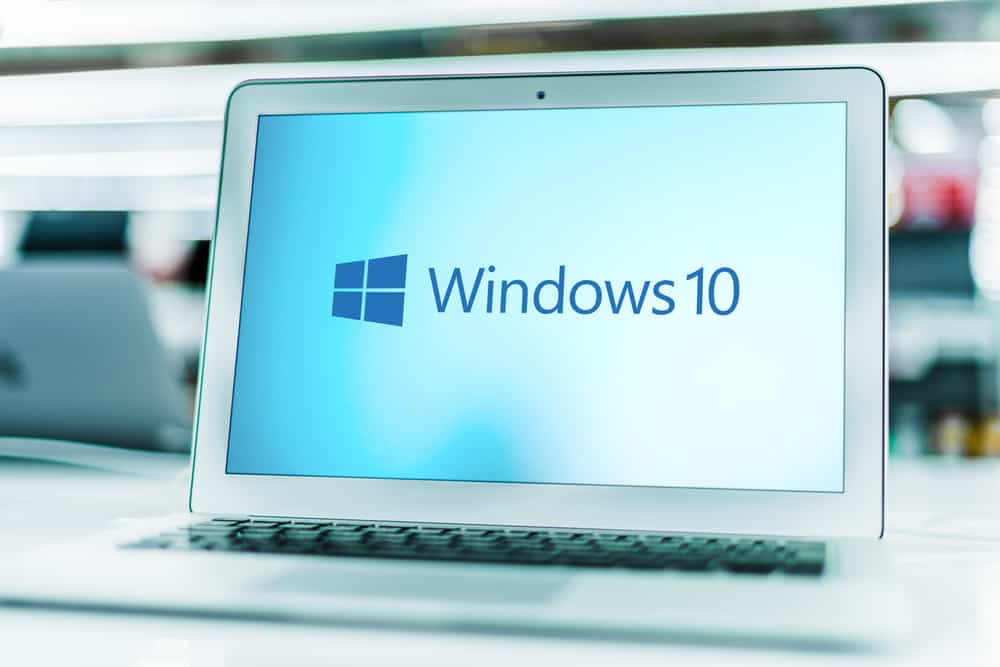
Windows 10 comes with a few utilities that help you repair your installation if it has become corrupt.
Let’s consider three of them.
A. Windows Startup Repair
This feature claims to “fix problems that keep Windows from loading.”
It scans for common problems in your Windows boot manager and Windows kernel loader and automatically fixes them.
If you’re interested in learning how the process works, read this article on Microsoft’s official website.
Here’s how you can load Startup Repair:
- Go through the six steps we presented for Safe Mode.
- Select Startup Repair.
- Choose an administrator account.
- Enter your password.
- Wait until the repair process completes.
- Restart your computer.
B. Windows Restore
The Windows Restore utility works by creating snapshots of the system that can be used to restore the system to a previous state.
The restore point is created automatically when a major event occurs, such as installing new software or making significant changes to the system.
You can also create a restore point manually.
Load winRE again and select System Restore.
If you have a restore point that predates when the problem started, select it and complete the restore wizard.
The process may take a few minutes.
Once it’s complete, restart your computer and see if the issue disappears.
However, if you don’t have an appropriate restore point, you can’t use this fix to resolve your issue.
Note: Restoring your Windows reverts your settings to the restore point’s date.
Some of the files and documents on your boot drive will also be affected, but the files on your other drives will be safe for the most part.
C. Reset Your Windows
This option is one step before installing a fresh copy of Windows 10.
It lets you revert the Windows instance to its initial settings, essentially acting as a factory reset feature.
You’ll lose all your settings and data on your boot drive.
But it may save you from the hassle of a clean installation.
Follow these instructions to reset your Windows 10:
- Load into Safe Mode.
- Press the Windows Key + I to load the Settings dashboard.
- Navigate to Update & Security > Recovery.
- Click on Get started.
- Choose your preference about keeping your files.
- Choose your preferred installation method.
- Click Next to get started.
Note: Don’t interrupt the reset process, as it’ll destroy your current Windows, and you’ll have to install it from scratch.
3. Reinstall Your Windows

If you’ve made it this far, none of the solutions and fixes have worked.
Your last resort is to install Windows from scratch.
Although it’s tedious, it wipes the slate clean, eliminating all corrupted files, conflicting settings, and malfunctioning drivers.
Installing Windows 10 is extremely straightforward.
In a nutshell, you need a bootable flash drive containing the installation files and a Microsoft license.
The steps are easy to follow, but the process isn’t foolproof.
If you haven’t done this before, we recommend asking a professional to do it for you.
Although it may cost you some money, it will save you time and headaches.
Plus, you can be sure that you won’t make any mistakes that bring the problem back.
When discussing the issue with the technician, tell them about the changes you’ve made and explain when the problem started.
This information helps them take the right approach and avoid problems down the line.
They may even be able to get rid of the problem without reinstalling your operating system.
4. Check Your Hardware
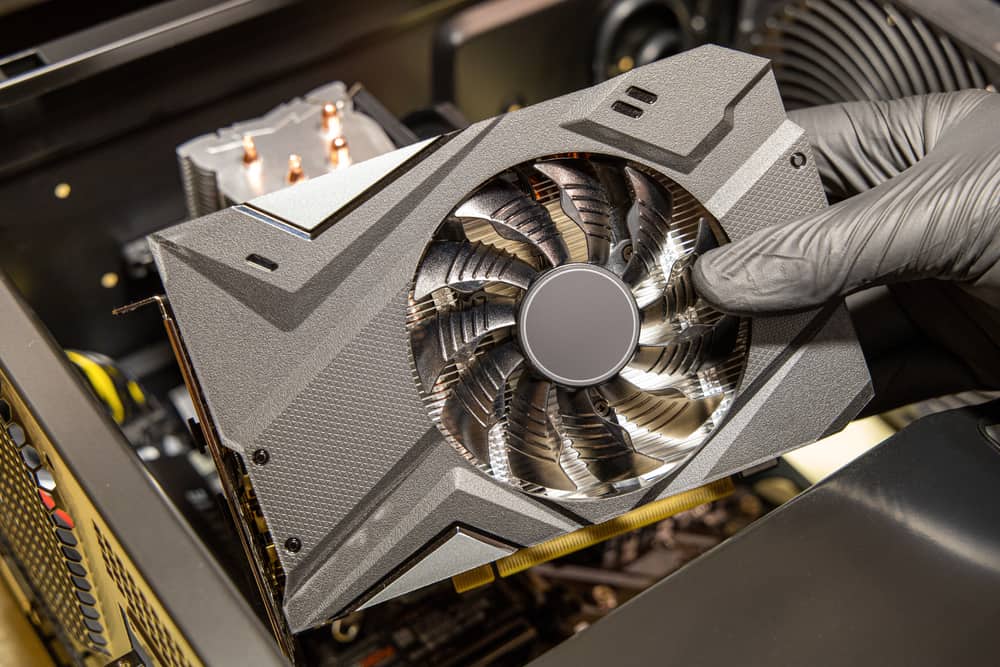
If none of the previous solutions eliminate the recurrent BSOD issue, it’s time to consider hardware glitches, even if you managed to load Windows in Safe Mode.
Unfortunately, sometimes computer hardware malfunctions without warning.
Your hard drive gets a bad sector on the parts that hold critical system information, or one of the chips on your RAM just dies.
When these issues happen, your computer can act strangely.
A. Manual Inspection
This step is almost exclusive to PCs since you can open the case and take the computer apart.
Laptops are much more limited, and we don’t recommend turning them inside out.
Start with the graphics card.
Disconnect it from the motherboard and connect your display to the onboard port.
If you have more than one RAM module installed, remove all but one.
If you have multiple storage drives, only keep the boot drive connected to your motherboard.
Then turn on your computer and see if you still keep getting blue screens.
If not, add the disconnected components one by one and restart your computer every time to see which one causes the problem.
B. Bootable Diagnostic Tools
If you have a laptop or can’t access your case, you can check the health of your components using bootable diagnostic tools.
These lightweight applications often don’t have a graphical user interface and run automatically.
However, you have to know your way around these tools.
Otherwise, you may accidentally delete your files or overload your components.
Hiren’s Boot CD was the most popular option until Windows 7.
The community still maintains a limited version of the toolbox for Windows 10 with USB booting capabilities.
Other options include the Trinity Rescue Kit and SystemRescue.
NEXT: Computer Taking Forever To Restart (Causes, Fixes)



